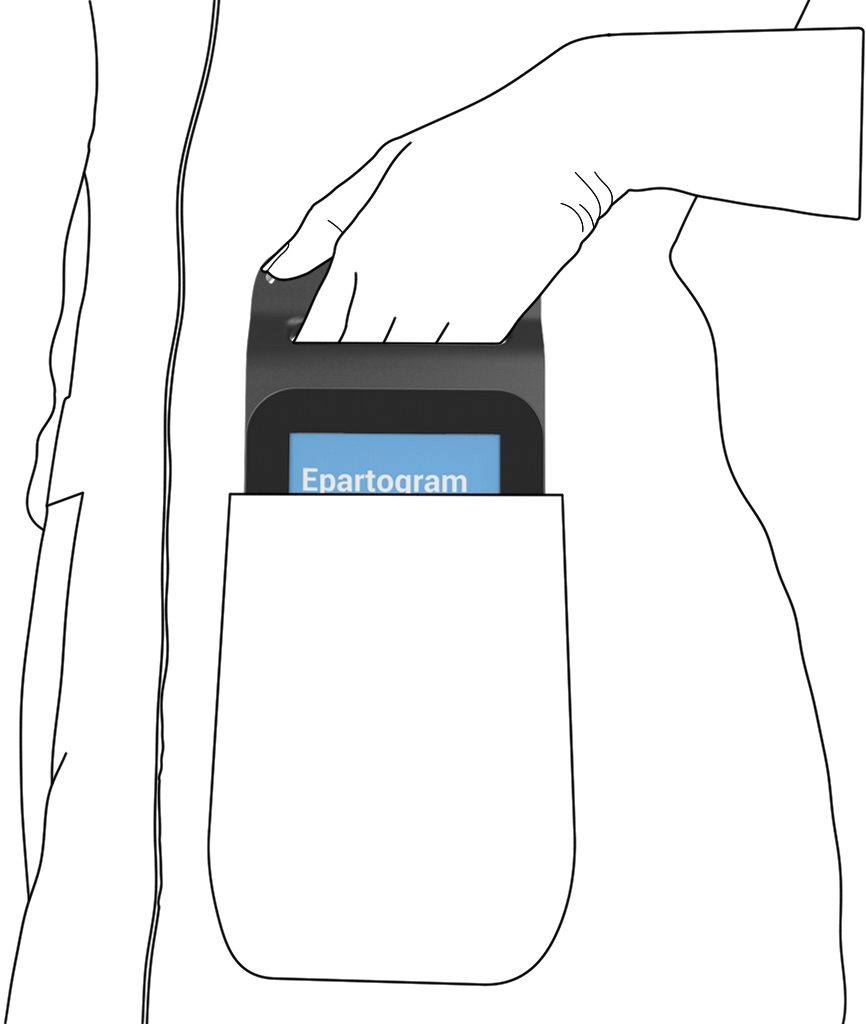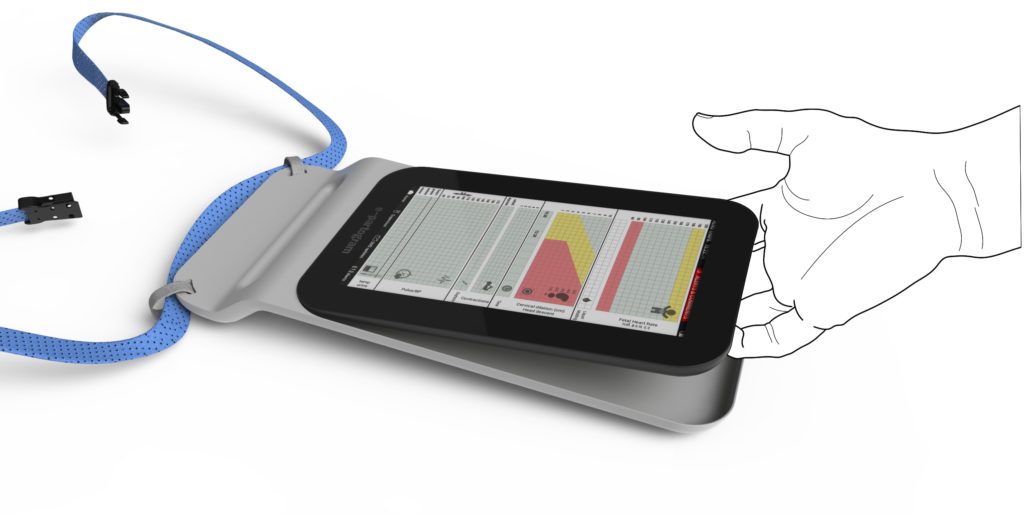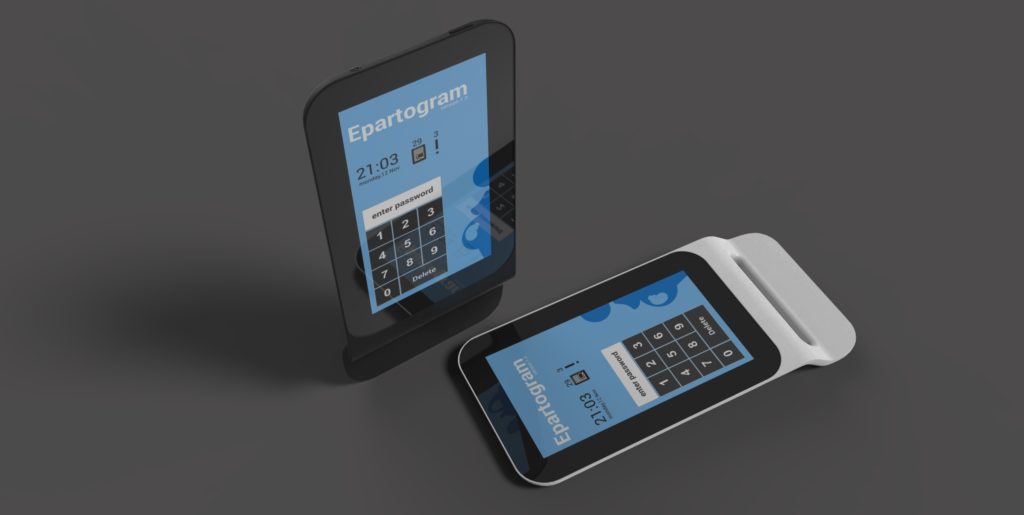Epartogram
Midwives use the paper Partogram to monitor the progress of labour during child birth.
This solution is a digital version of the paper graph, which also guides the midwife take accurate, quick and timely decisions.
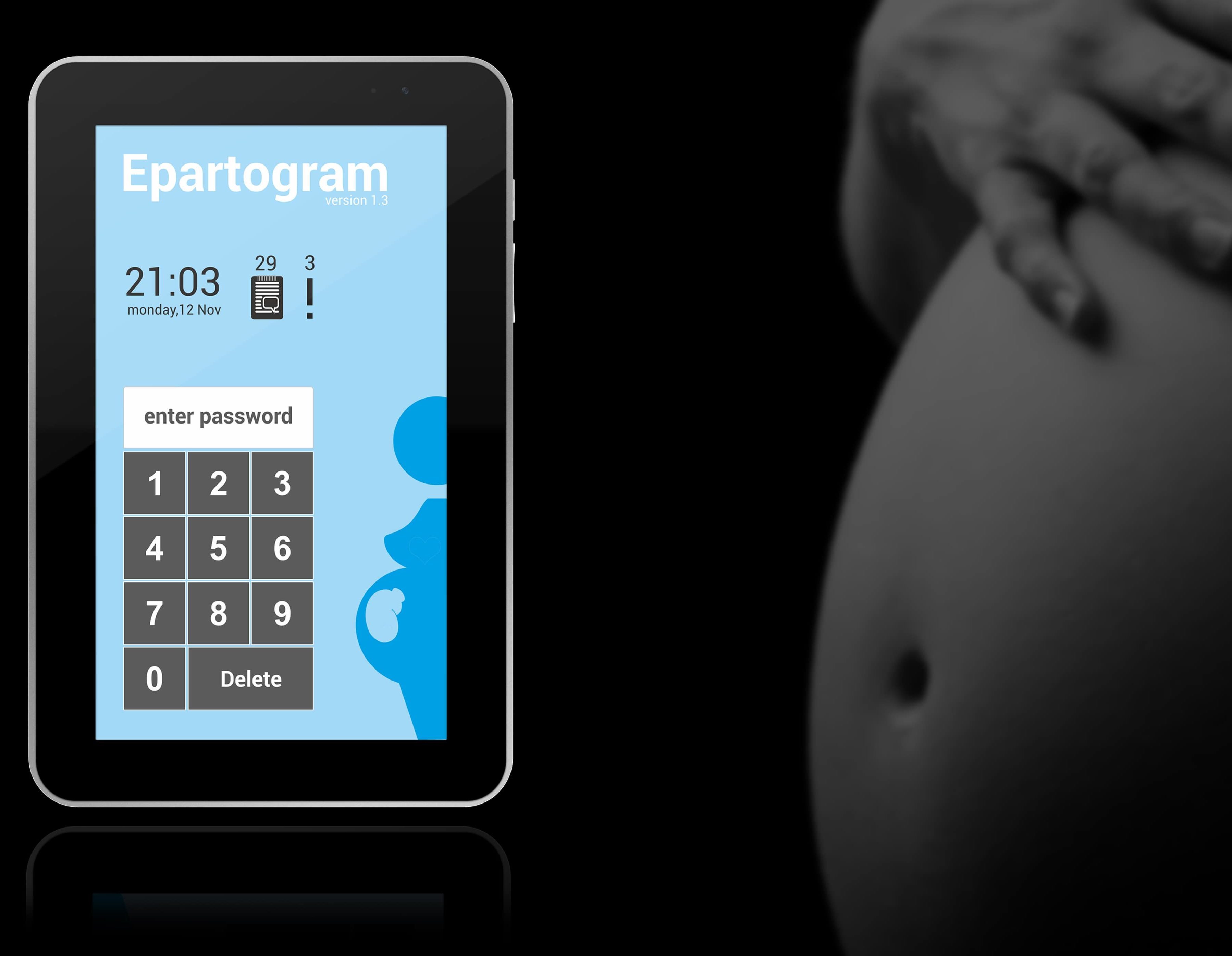
Who are the midwives?

A midwife is a healthcare professional who cares for the mother and the newborn during and after childbirth. A midwife is not a physician, rather their education and training is similar to that of a nurse and in many countries Midwifery is a branch of nursing.
In many developing countries, midwives play a significant role in monitoring a mother in labour and taking regular readings to report any irregularities to the doctors or physicians.
What is a Partogram?
A Partograph or Partogram is a graphical record of key data taken during labour, entered against time on a single sheet of paper.
The key measurements include statistics such as cervical dialation, fetal heart rate, contractions rate and other vital signs.
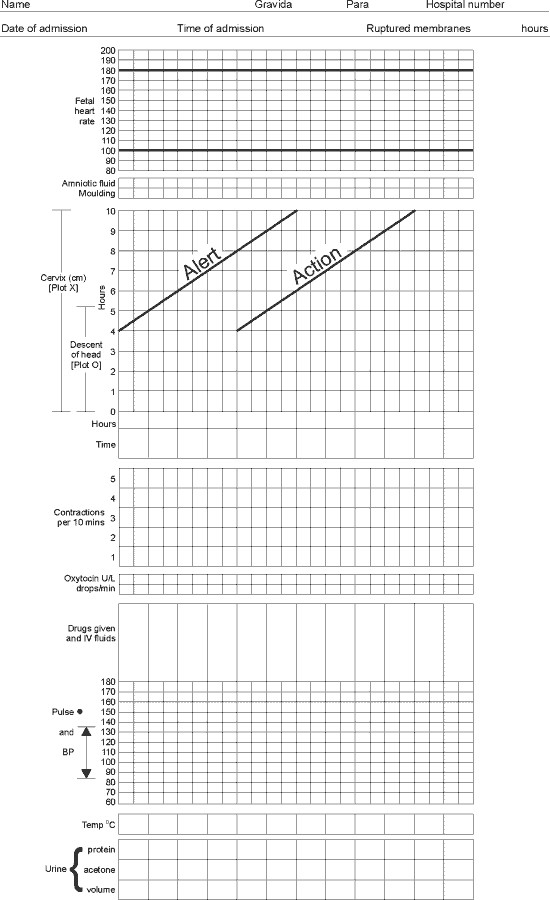
Epartogram
Epartogram is a digital version of the paper partograph.
The Epartograph is designed for a 7″ tablet which can be used by the midwives to monitor the condition of the mother.
It is designed to assist midwives in reading and diagnosing the condition of the mother in real time. Any critical situations will be notified immediately to the midwife. Monitoring multiple mothers at the same time helps reduce the amount of paperwork previously handled by the midwife.
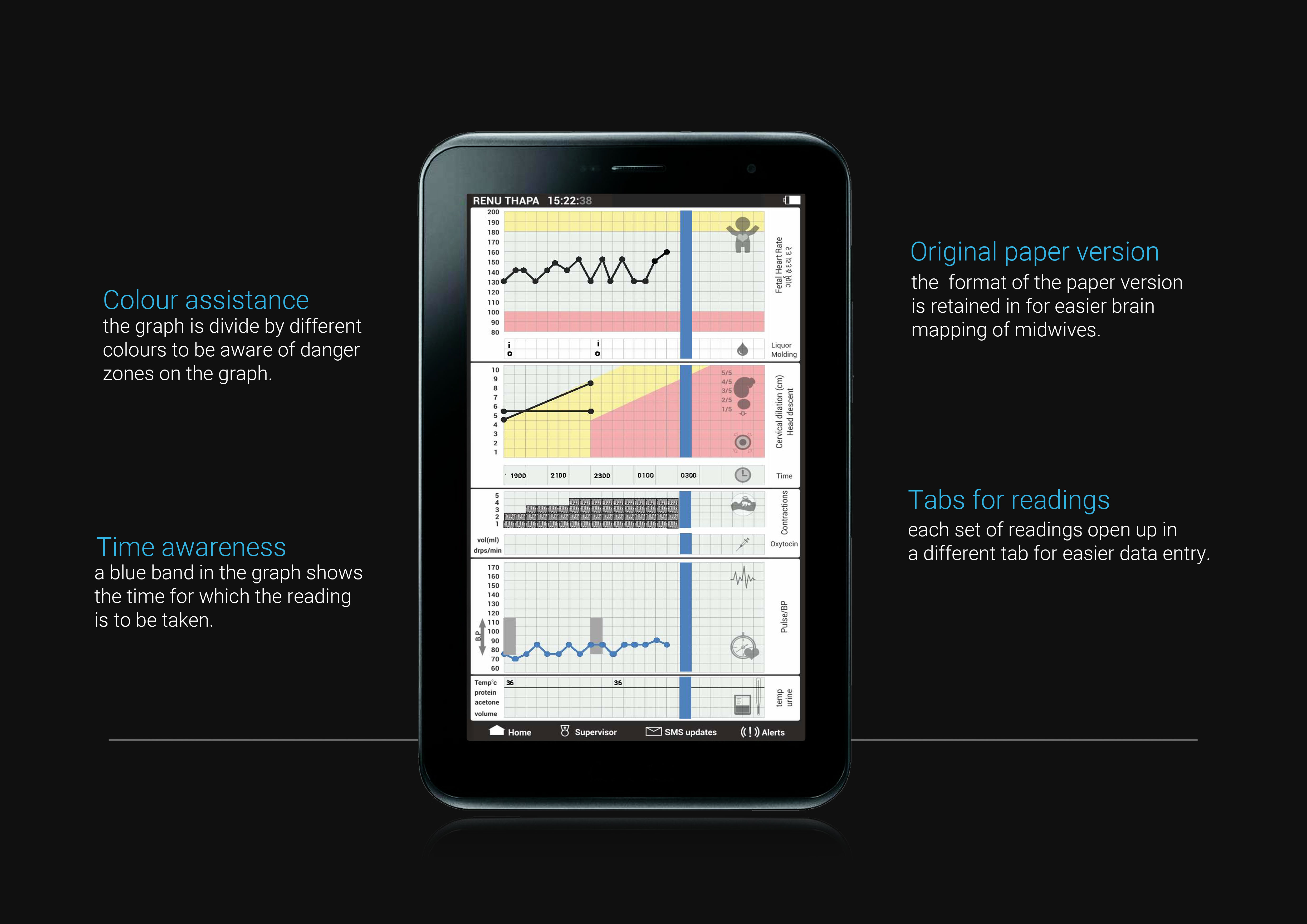
How can the Epartograph help midwives?
Every section of the Epartograph is a separate entry point.
Usage of colors to indicate the criticality of the current reading, gives a real-time feedback to the midwife.
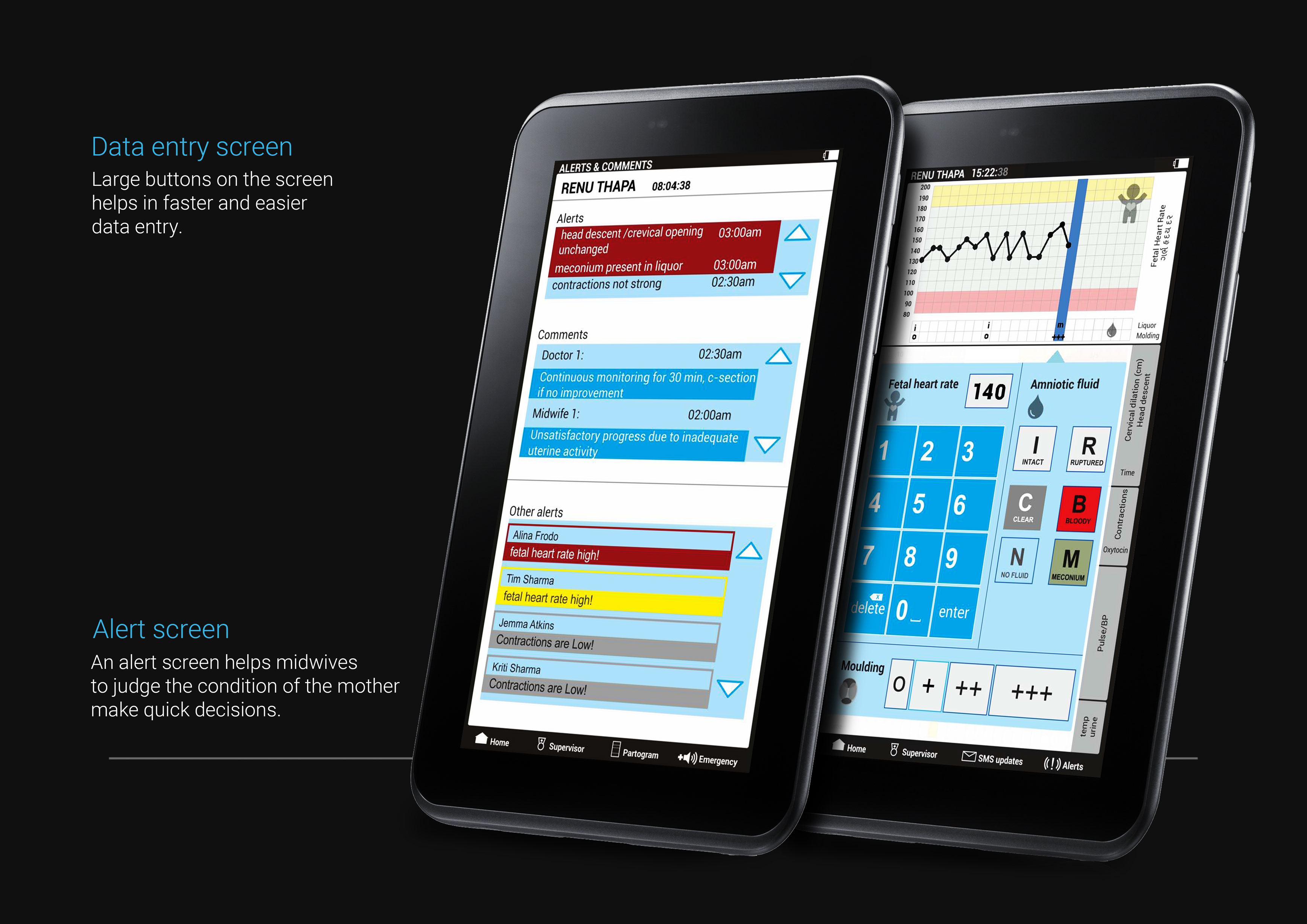
Key screens
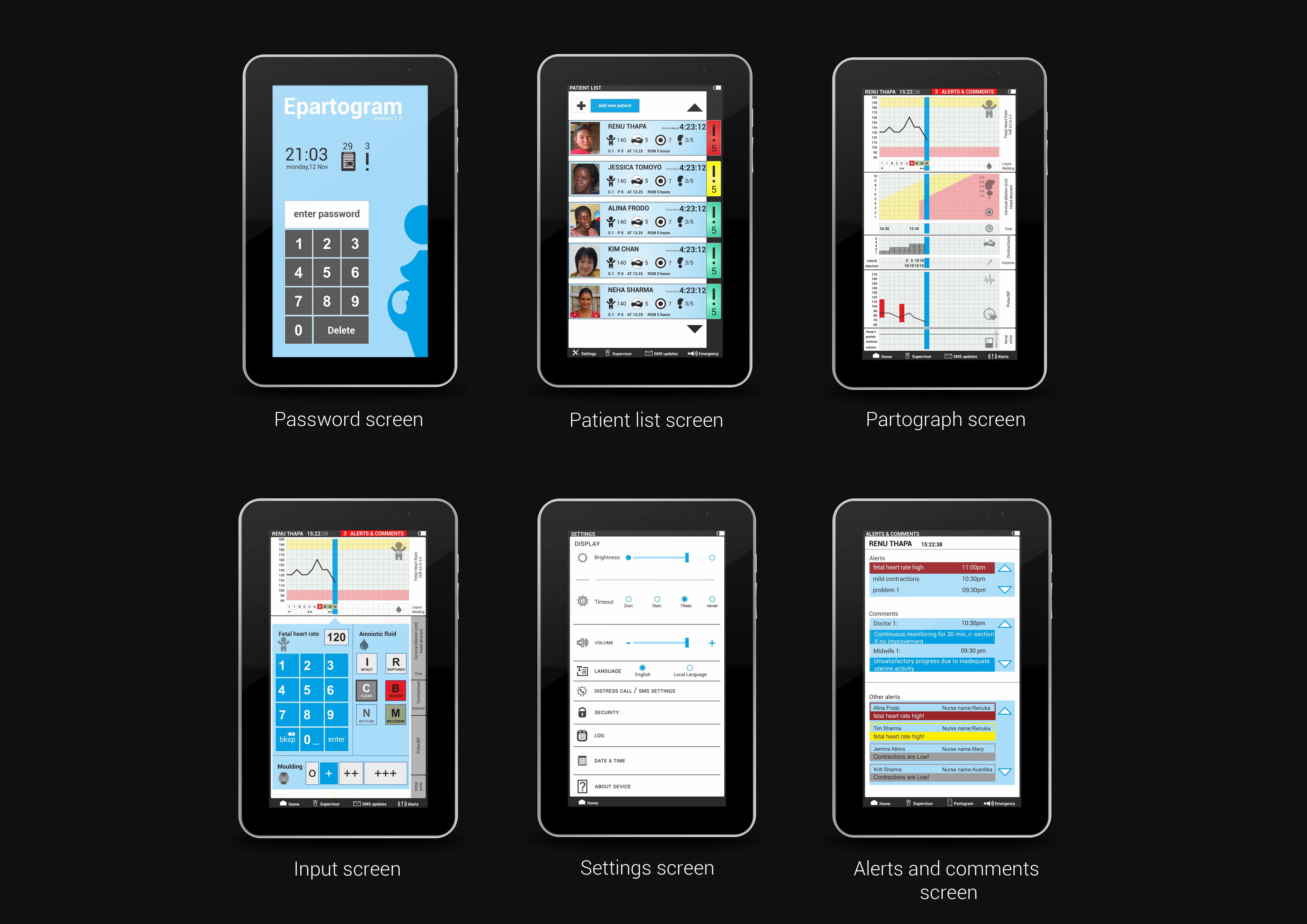
Field testing
A prototype of the Epartogram was tested with midwives from hospital in Nepal, India.
Specific set of scenarios with readings were asked to be entered in the Epartograph and observe its
The design had many promising improvements.
Low learning curve
Since the design was based on the original paper partogram, the midwives took very less time use the device and be familiar with its operation.
Timely Assistance
The Epartogram was able to alert the midwives of any critical situations and facilitate in sending the reports and data to the concerned doctors or higher medical staff.
Form iterations
Since the tablet was to be used by Midwives for long hours and under emergency conditions, an appropriate form design was also needed. The form had to support following pointers
– Easy to hold for long hours
– Robust and easy to carry around
– Information visibility should be high under clinical and natural lighting conditions
Form I
A flexible flap with cut out to see critical information easily.
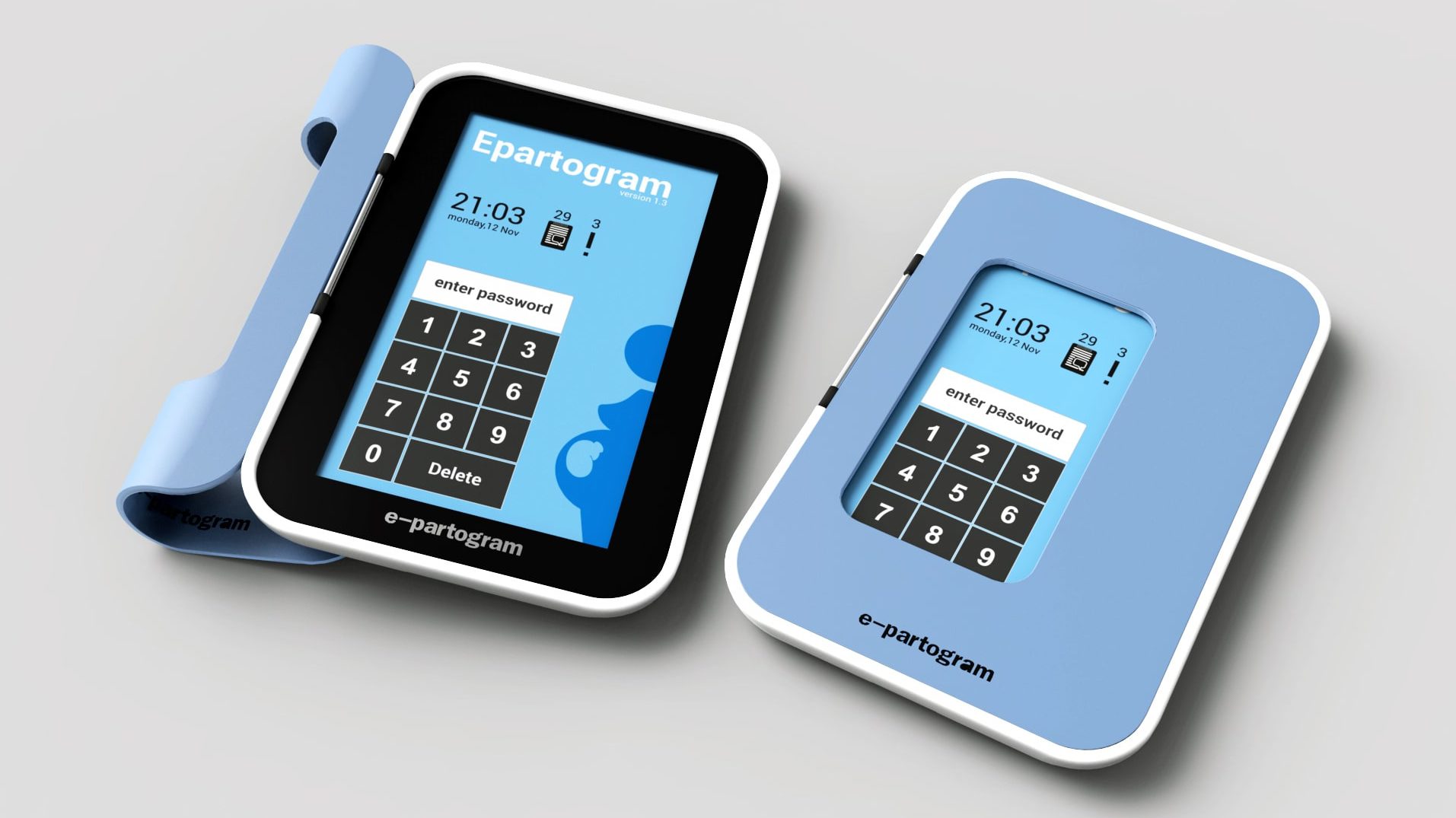
Form II
A stand at the back for a good viewing angle and easy data entry
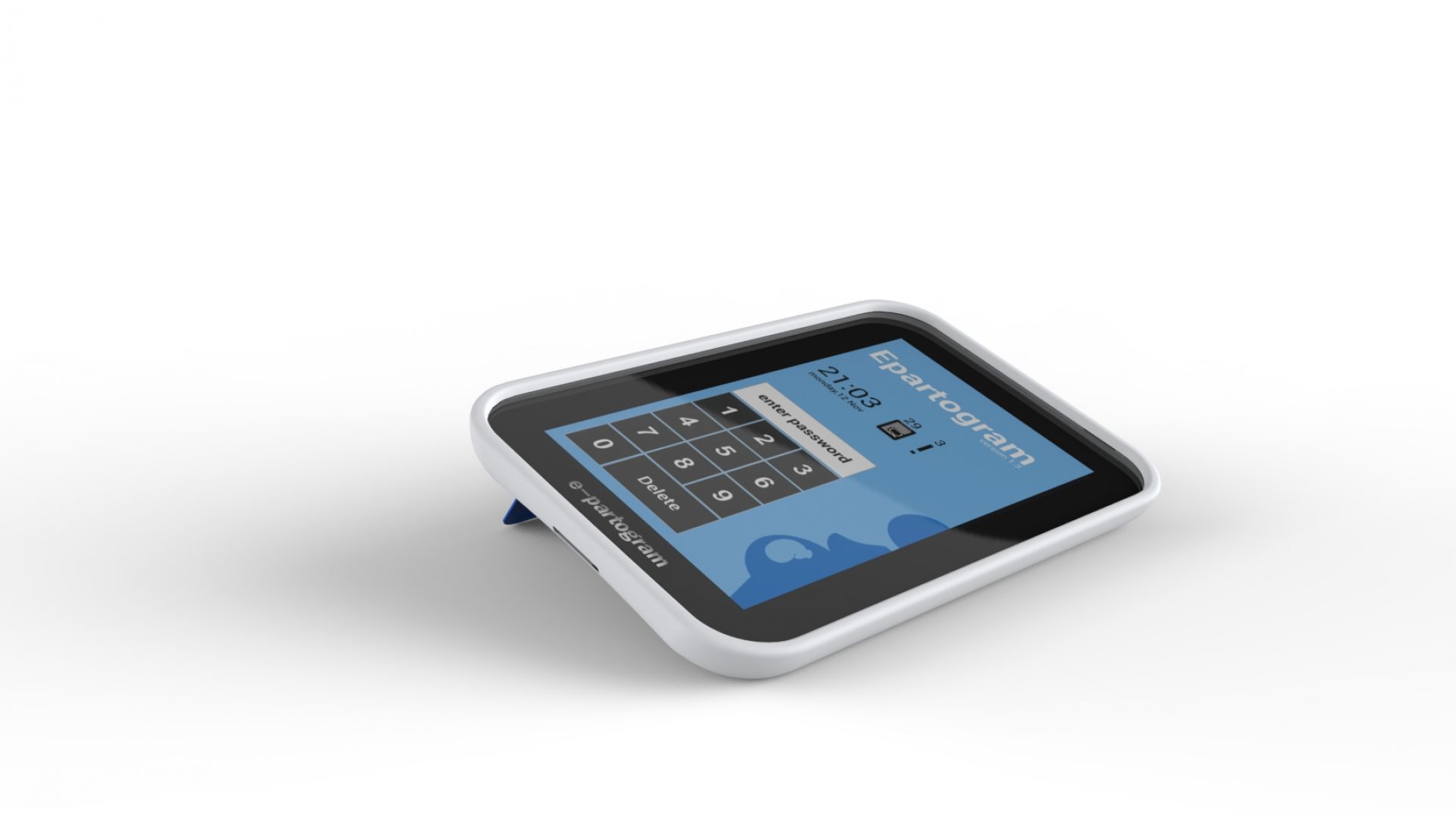
Final form
The form changes were introduced to a snap on case for the tablet to reduce the cost and easier maintainance.
A groove for midwife to hold the tablet vertically for easier data entry and a belt so that it can be worn around and be always with the midwife.
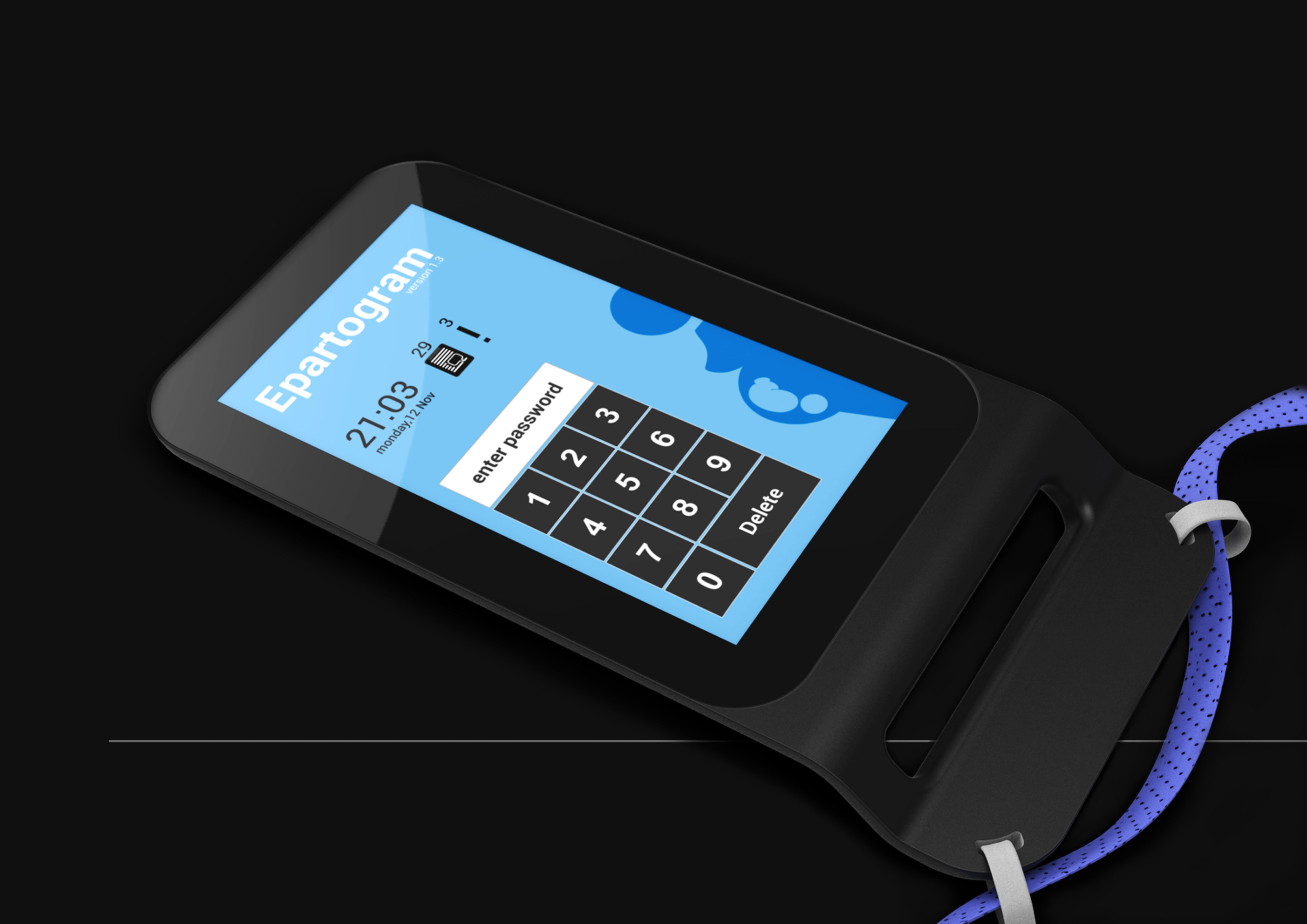
Form is big enough to be used without the belt and can be carried in the uniform side pocket.
Because of the replaceable snap on cover, the device can be used harshly and the cover can be replaced without much cost and technical difficulty.
